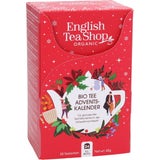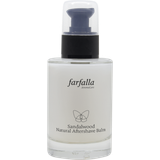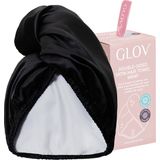The Curly Girl Method - How To
Transform your curls to their former glory!
You have curly hair and heard about the Curly Girl Method but don't know where to start? We're here to explain the basics behind the technique, shine a light on how to get started, which products to use and what to avoid to ensure that you're treating your curls with the love and care that they need and deserve.
What is the Curly Girl Method?
The Curly Girl Method is hair care technique used for naturally curly hair based on the book, Curly Girl: The Handbook written by Lorraine Massey. It outlines the techniques of eliminating hair damaging habits (like heat styling and the use of sulphate-based shampoos) to opting for a healthier approach using conditioners and various styling creams and gels.
Where to Start? The Final Wash
So, you're ready to good-bye to lacklustre curls and start your curly hair journey? You've locked away your hair-damaging styling tools and all set to welcome beautiful curls back into your life? If the answer is yes, we recommend beginning your journey with a final wash. The final wash removes dirt particles and all previous silicone-based product buildup. The first, or rather last, cleanse can be done using a sulphate shampoo that is free from alcohol and silicone. All product residue needs to be thoroughly removed from each individual strand and sulphate shampoos are the optimum choice in this regard. Once the initial buildup has been removed it's important to note what the do's and don'ts are of following the CM Method.
Don't Use:
- Sulphate shampoos - namely sodium lauryl sulfate & ammonium laureth sulfate
- Alcohol-based products
- Silicones
- Parabens
- Heat styling tools
- Combs & brushes - cause friction that may lead to hair breakage
Do Use:
- Sulphate-free shampoos/cleansers
- Emollients - such as shea butter, olive & other plant-based oils
- Proteins
- Humectants
- Moisturisers
- Styling gels & creams free from alcohol, silicones & sulphates
Cleanse & Clarify
If you have very dry hair or hair that is easily tangled, it is advised to do a pre-poo/detangle before cleansing. A plant-based oil or detangling product/deep conditioner can be used to get the knots out of your hair. Be sure that the product has enough slip to ensure that the detangling process doesn't damage your hair. The oil can be left on your hair overnight or simply apply to the hair a few hours prior to cleansing. This will ensure that your hair doesn't dry out when cleansing.
Hello Co-washing! Now it's time to cleanse your tresses. One of the cleansing techniques mentioned in The Handbook involves doing a co-wash which entails using a cleansing conditioner instead of conventional shampoo. Again, the product should be free from any parabens, silicones and alcohol whilst providing the hair with sufficient moisture.
- How to: Apply a generous amount of conditioner to your hair and scalp massaging the product into the strands and the scalp. Rinse with plenty of water.
Condition
Conditioners are meant to condition and nourish the hair, so be sure to opt for a product that is rich in plant-based ingredients, as well as emollients, humectants and moisturisers. If your hair is on the drier side, it's ok to not rinse the conditioner out completely. In doing so, you can forego the use of a leave-in. However, if your hair tends to be weighed down by conditioner, rinse the product completely and opt for a leave-in condition when styling your hair instead.
- How to: Smooth the conditioner over the hair then rake the product through your hair. It helps to section the hair to ensure that each strand is coated with product. Again, opting for a product with more slip is preferred as they prevent hair strands from snapping.
- Tips: Curly hair requires moisture, lots and lots of moisture. Added moisture can be gained in the form of deep conditioners and is an essential step that should take place once a week to improve the structure of the hair. Use a thermal heat cap to help open the cuticle so your deep conditioner can really get in there and work it's magic for maximum benefits.
Styling
Styling is a vital step in the curly girl routine as it defines, enhances and sets the curl. It is best to apply styling products such as creams, lotions and gels to wet hair as long as these formulas are curly girl-friendly, i.e. without any sulphates, silicones, alcohol or parabens.
- How to: Distribute the product (s) throughout the lengths of the hair by using either a raking or smoothing technique. Use a cotton t-shirt to remove any excess water and product by blot drying and/or scrunching. Dry your curls with a diffuser if you're in a hurry but remember to use the cold setting as opposed to the warm, "hair-frying" setting. You may be left with a "cast" once the hair has dried. This is a film formed on the hair after the styling products have dried and sealed the hair. Some hair types require a simple scrunch to break the cast. Other hair types may need a light-weight, plant-based oil to get ensure a smoother feel. We recommend opting for a jojoba oil if you have fine hair or coconut or argan oil for thicker, coarser hair types.
- Tips: Plopping is a great technique that allows your curls to dry quickly by soaking up moisture without causing any frizz. Lay a T-shirt or a microfiber towel out on a chair or bathroom counter with the sleeves at the end closest to you. Flip your head forward, bending at the waist, so that all of your hair is in the centre of the towel and on top of your head. Take the flap of fabric that is behind your head and flip it up over your neck, then tie the long sleeves of the shirt (or extra fabric of your microfiber towel) behind your head in a knot.
Preserving your curls at night
After co-washing/cleansing and styling your curls, enjoying the frizz-free effect throughout your day, it's time to preserve the curl pattern so your curls don't go get squashed while you sleep. Many curlies use the pineapple method. To pineapple the hair means to tie the hair loosely at the crown of the head using a fabric scrunchie or headband. This prevents breaking or denting the hair.
- How to: Flip your dry hair all the way over, and secure into a very high and loose ponytail. Use a scrunchie or fabric covered hair tie in order to avoid breaking or denting the hair. Stand back up, and separate the ponytail so that half is on each side of your head. In the morning, a quick spritz of water or curl refresher will have your curls looking popping.
Remember, restoring your curls doesn't happen overnight. It takes time, consistency and above all patience. Follow these easy steps and tips to nurture your curls back to health and embrace the journey. It's worth it!
Latest reviews
-
 5.0 (1)
5.0 (1)English Tea Shop Organic Tea Advent Calendar, Red, 1 Pc. (42 g)
- 24 trendy organic teas
- Fruity, spicy, refreshing & more
- Beautiful packaging
£5.10 (£121.43 / kg)Sold out
-
 5.0 (1)
5.0 (1)farfalla Sandalwood Natural Aftershave Balm, 100 ml
- Regenerating formulation
- Warm fragrance
- With organic aloe vera
£38.50 (£385.00 / l)Delivery by January 06
-
 5.0 (1)
5.0 (1)SPEICK Natural Aktiv Solid Shampoo with natural caffeine, 60 g
- For all hair types
- With exquisite components
- Gently & thorough cleansing
£5.75 (£95.83 / kg)Delivery by January 06
-
 2.0 (1)
2.0 (1)GLOV Double-Sided Premium Hair Wrap, Black
- Black
- Pink
- Beige
- Ideal for curly hair
- Deisgned to be worn on both sides
- High-absorbent microfibre
£24.00Delivery by January 06
Magazine Articles:
Discover Ecco Verde:
-
Great Britain: Free standard delivery from £69.90
-
Free
returns -
Get at least 1 free sample
per order More than 19.350 products


